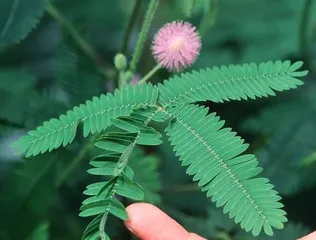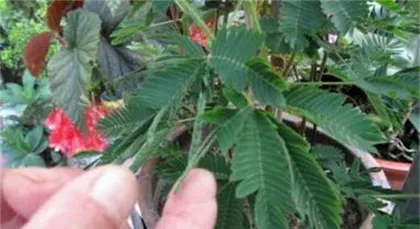Sensitive Plant: A Guide to Safe Indoor Care

The sensitive plant is a popular indoor potted plant, favored by many plant enthusiasts for its elegant leaf shapes and charming flowers. However, many people are unaware of whether the sensitive plant is toxic and what precautions to take when caring for it indoors. This article will introduce the toxicity and care methods of the sensitive plant to help everyone better understand this beautiful plant.
I. Understanding the Toxicity of the Sensitive Plant
The sensitive plant has low toxicity among perennial plants, but it is still toxic. The leaves and stems of the sensitive plant contain substances such as catechin, and if ingested or excessively contacted, it may cause symptoms such as gastrointestinal discomfort, vomiting, and diarrhea.

II. The Benefits of Indoor Care
The sensitive plant is very suitable for indoor care. It can purify indoor air and absorb harmful gases. At the same time, it grows relatively fast and has a very beautiful shape, which can add aesthetic appeal to your home.
III. Choosing the Right Lighting
The sensitive plant likes bright environments but should not be exposed to direct sunlight, as it will burn the leaves. You should choose ample indoor light and place the sensitive plant a little further away from the window.
IV. Paying Attention to Room Temperature and Humidity
The sensitive plant is suitable for growing in an environment with appropriate temperature and moderate humidity. During hot summer months, attention should be paid to indoor ventilation and increased watering. During cold winter periods, the indoor temperature should be kept no lower than 10 degrees Celsius.

V. Watering Properly
The sensitive plant likes a moist environment, but excessive watering can lead to root rot. When watering, it is important to be moderate and avoid overwatering.
VI. Fertilizer Application
The sensitive plant grows relatively fast, so it needs regular fertilization. However, be careful not to over-fertilize, as this can cause leaves to turn yellow or stems to rot.
VII. Timely Pest Control
The sensitive plant is susceptible to pests such as aphids, so it is important to control them promptly during the care process. You can use pesticides or soak the sensitive plant in fertilizer water to eliminate pests.
VIII. Choosing the Right Growing Medium
The sensitive plant grows relatively fast, so it's necessary to choose an appropriate growing medium. You can add a suitable proportion of vermiculite or sand to improve drainage.
IX. Pruning
The sensitive plant grows vigorously and needs proper pruning to maintain its beautiful shape. You can prune the leaves or stems in spring and autumn to control its growth.
X. Regularly Changing the Soil
The sensitive plant grows relatively fast and needs regular soil changes to ensure an adequate supply of nutrients. You can change the soil once a year, being careful not to damage the roots during the process.
XI. Avoid Excessive Touching of Leaves and Stems
The leaves and stems of the sensitive plant are quite delicate and easily damaged. During care, you should avoid excessive touching of the leaves and stems to avoid affecting the plant's health.
XII. Maintaining a Dry Environment
The sensitive plant grows relatively fast and can easily absorb moisture from the air. It is important to maintain a dry indoor environment to prevent the roots from becoming too wet.
XIII. Transplanting Precautions
When the roots of the sensitive plant become increasingly dense, it needs to be transplanted in a timely manner. When transplanting, be careful to protect the roots and choose a pot of the appropriate size.
XIV. Avoiding Exposure to Pets and Young Children
Although the sensitive plant has low toxicity, it is still somewhat toxic. During the care process, it should be kept away from pets and young children to prevent accidents.
XV.
The sensitive plant is a beautiful and popular indoor potted plant. During its care, it is necessary to pay attention to proper lighting, humidity, fertilizer, and avoid excessive touching of the leaves and stems. At the same time, it is important to understand its toxicity and avoid accidental ingestion or contact. By following these methods, we can help the sensitive plant grow healthier and add beautiful colors to our homes.